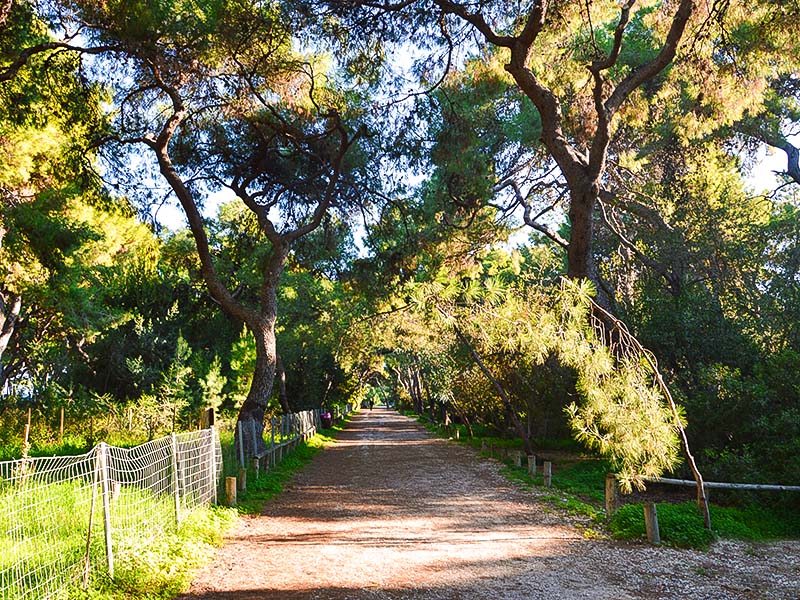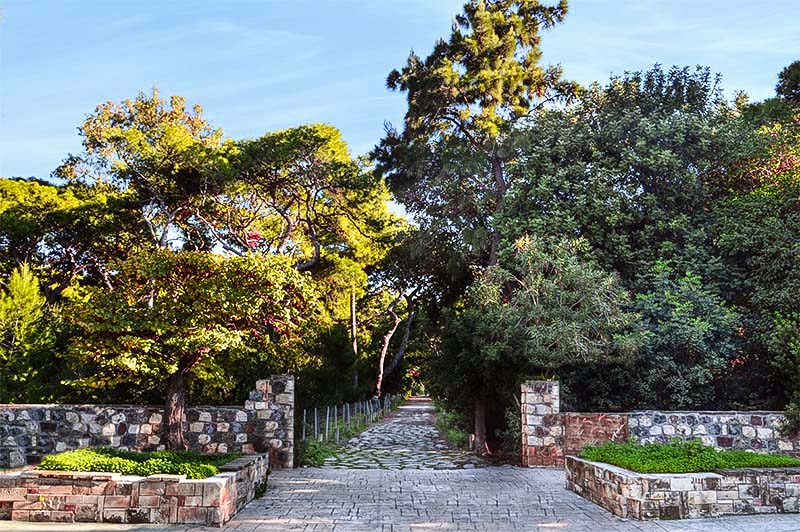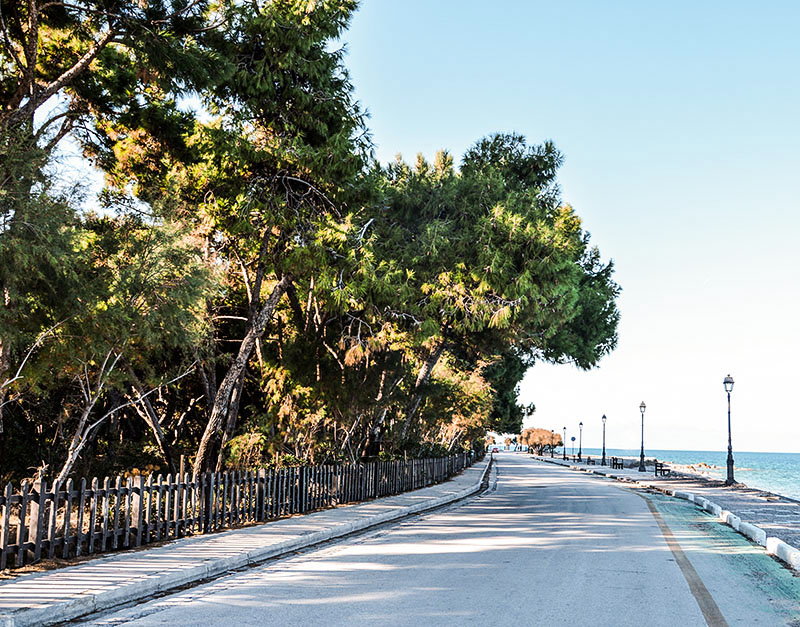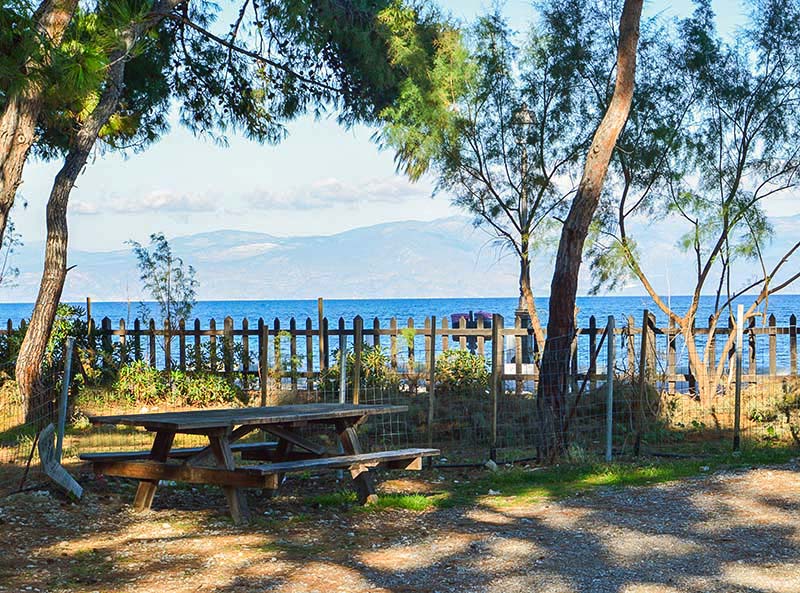The Pefkias forest is next to the coastline of the Corinthian gulf, on Xylokastro's east end, in Xylokastro-Evrostina Municipality in Corinthia region. It is a forest created for aesthetic purposes, though considered of natural origin even though many non-native species have been planted. It has a length of 1,760 metres and a width of about 80 to 220 metres, covering a total area of about 61 acres. Its age is calculated at 140 years.
It was characterised as the "Forest" of 1926 and the "Aesthetic Forest" of 1974. It is famous for its beauty and well-known that the poet Kostas Karyotakis referred to that particular forest as the "green shore of the homeland" in his poem Ypnos (Sleep) of Nepenthe poem collection. Even though the man was not born in the area, his grandfather's permanent residence was there. The forest was also a source of inspiration for Angelos Sikelianos, a poet and playwright, who had his vacation house built in one end of the forest, which is still preserved to this day.
The most characteristic tree of the forest is the Aleppo Pine, though 83 species of plant can be found in the tree; examples include the Pistacia tree, the Myrtle, the Wicker tree, the Holly tree, the Tamarisk, the Silver Berry tree, the Spiny Broom, the Buckthorn, the Stone Pine, the Cypress, the Judas Tree, the Carob Tree, the Phoenicean Juniper, the Strawberry Tree, the Oleander, the Plane Tree, the Alfalfa, the Wild-Olive, the Grecian Laurel, the Eucalyptus, the Turkish Pine, the Maritime Pine, the Arizona Cypress, the Japanese Pittosporum, the Acacia Trinervis and the Persian Silk Tree. Some of these species were planted in different periods of time.
The forest features a network of paths, which make hiking pleasant and easy; it also has three canteens, the biggest and closest of which belonging to the Greek Organisation of Tourism. It also has water supply infrastructure as well as fire hydrants.





